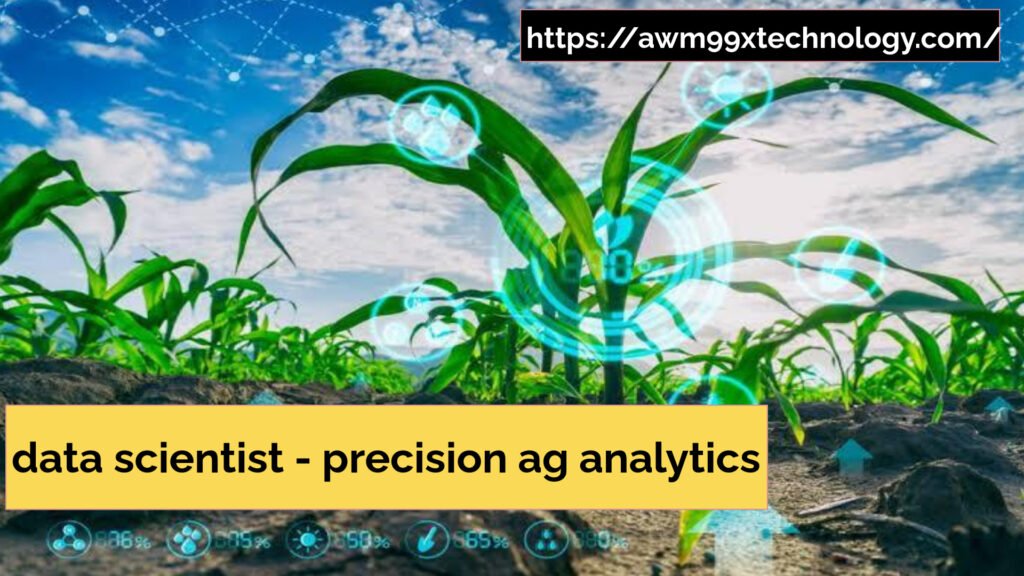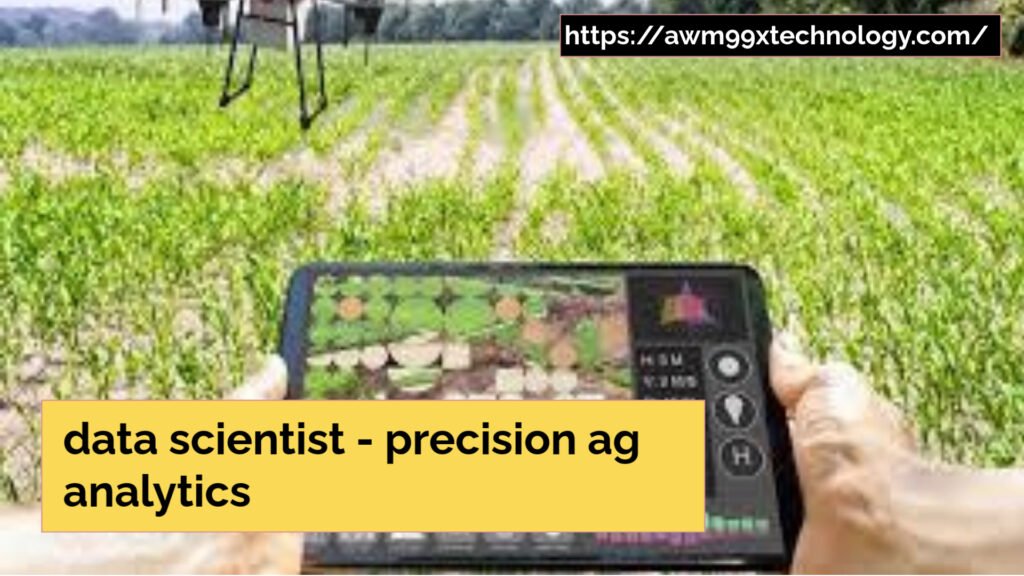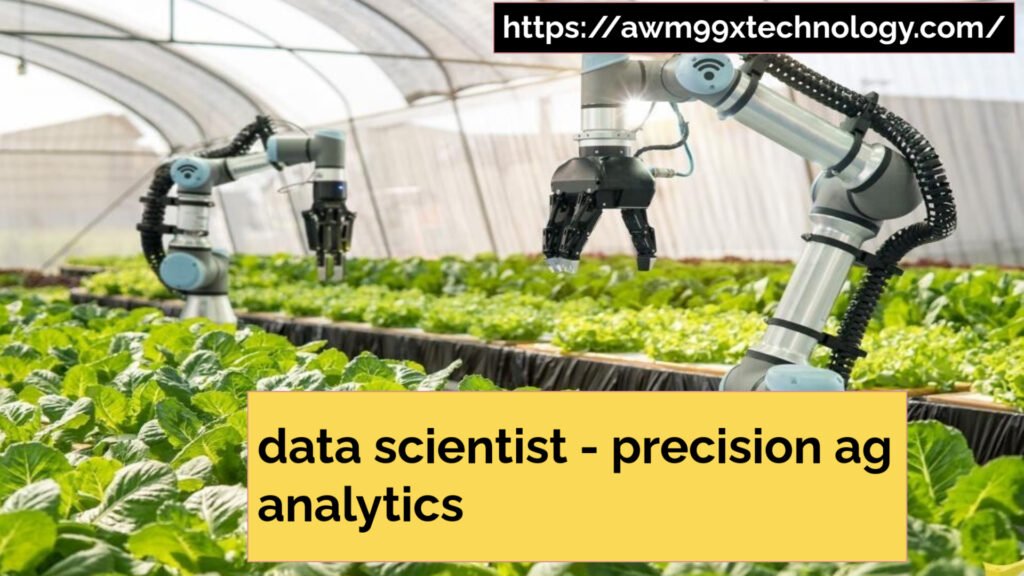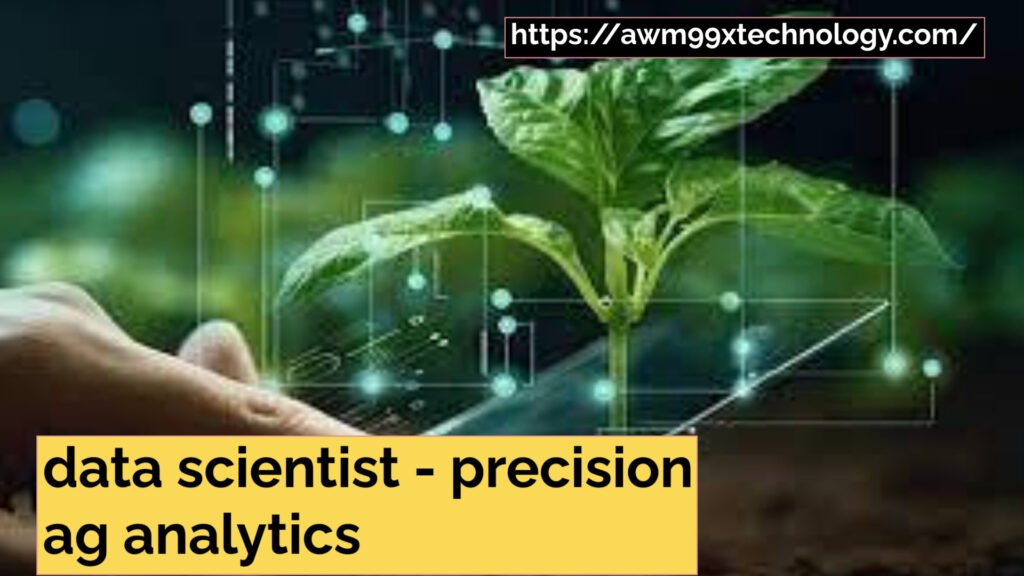Table of contents
- Introduction
- Key Points
- What is Precision Agriculture Analytics?
- Who are the data scientists?
- Essential Technologies Facilitating the Analytics of Precision Agriculture
- Addressing the Data Dilemma in Agriculture
- Big Data and Its Significance in Precision Agriculture
- Analytics of Precision Agriculture and Sustainable Development
- The Future of Farming: Data for Everything. What Will Change in Farming
- Precision Ag Analytics Help to Increase Crop Yields
- Significance of data scientist – precision ag analyticsto Farmers Economically
- Data Scientists Related Risks in Agriculture Sector
- Case Studies: Successful Applications of Precision Ag Analytics
- Precision Ag Analytics Tools: A Closer Look
- The Future of Data Science in Agriculture’s Sphere
- Frequently Asked Questions
- How do farmers increase crop yield through precision ag analytics?
- What tools do data scientists use in precision agriculture?
- Conclusion
Introduction
Farming has started to adopt a data-centric approach, with data scientist – precision ag analytics playing a key role in transforming the farming environment in terms of efficiency, productivity, and sustainability.
The purposes of data scientist – precision ag analytics in the world of precision agriculture enable farmers to make better decisions by exploring and analyzing available information.
The segregation of agribusiness and agricultural big data analytics and advanced agricultural data continues to ensure more efficient management of farming operations thus resource use optimization and subsequently higher yields.
This blog will discuss in what ways data scientists are through precision ag analytics, the next steps towards realizing the future of farming.

Key Points
Data scientists’ contribution to the transition in precision agriculture.
The role of big data analytics in the contemporary agricultural practices.
Use of precision agriculture analytics in the agricultural sector.
The instruments and technologies available for the data science to enhance agriculture.
Advantages which precision agriculture provides to farmers.
Predictions about the challenges and developments in precision agriculture.
What is Precision Agriculture Analytics?
Precision agriculture analytics improves farming by using advanced data technologies.
Data scientist – precision ag analytics professionals use insights from information and communication technology (ICT) and predictive data analytics. Moreover, this approach helps address concerns such as soil health, crop conditions, and water availability.
Modern farming relies on data analytics for real-time analysis. Farmers use this data for planting, watering, and harvesting decisions.
How analytics improves decision-making:
Data-centric agriculture not only minimizes resource use but also reduces potential losses. Consequently, this leads to higher farming efficiency.
Who are the Data Scientist – Precision Ag Analytics Experts?
Data scientists form an essential component in interpreting the big… and I mean big… agricultural data coming out of modern day farms.
Who are the data scientists?
They deal with massive datasets received from various hardwares including sensors, drones for agriculture and common weather data, and seek to analyze them.
Data Wrangler – collection and management of large datasets: data scientist – precision ag analytics in agriculture employ machine learning and sophisticated technologies in the determination of yield and assessment of early pest outbreaks.
Decision regret: resource demand management: Data scientists make available powerful predictive analytic gadgets that provide answers on whether it is time for irrigation, fertilization and/or pest control.
Essential Technologies Facilitating the Analytics of Precision Agriculture
The need to integrate technology into farming is central to improving precision agriculture analytics.
Machine Learning/AI: Predictive Modeling and Automation
These technologies create models that target crop diseases and pests. This enhances crop growth. Automation also helps streamline farm tasks.
Internet of Things (IoT)
IoT devices, such as sensors, continuously collect data on soil, moisture, and climate. data scientist – precision ag analytics analyze this information. As a result, farmers gain real-time insights into their farms.
Satellite and Drone Imagery
Remote sensing offers insights into crop health and growth patterns. Farmers can then use this data to implement better measures. This leads to optimized farming practices.

Addressing the Data Dilemma in Agriculture
Data silos create challenges for farmers using precision farming. Storing data across multiple systems makes integration difficult and inefficient.
What Are Data Silos in Agriculture?
Data silos in agriculture refer to information stored separately on different platforms. This fragmentation limits the usefulness of the data, making it hard to generate actionable insights.
Importance of Data Integration
Integrated data helps farmers make better decisions. It allows for accurate predictions on crop health and resource management. Without integration, data from sensors, weather stations, and crop monitoring systems goes underutilized.
Solutions to Overcome Data Silos
Farm management systems and analytics platforms can eliminate data silos. They import data from IoT devices, satellite imagery, and farming tools, enabling unified analysis for smarter decisions.
Big Data and Its Significance in Precision Agriculture
Collection and Processing of Large Datasets
In agriculture, big data comes from multiple sources, such as historical records, real-time climate data, and sensor-based soil and crop data. This vast collection allows for detailed analysis.
Impact on Yield Predictions
Farmers and investors use big data to predict crop yields, track market cycles, and decide which crops will perform best. This helps optimize crop investments.
Examples of Big Data Applications
Farmers apply big data insights to fine-tune irrigation schedules and manage fertilizers more accurately. For example, precision irrigation has led to water savings of up to 40%.
Analytics of Precision Agriculture and Sustainable Development
data scientist – precision ag analytics helps farmers adopt sustainable practices by enabling efficient production while reducing environmental impact.
Efficient Resource Use
Precision farming optimizes water, nutrient, and pesticide use, reducing environmental harm. Studies show precision ag can cut pesticide use by 20-30%, leading to less soil and water pollution .
Minimizing Environmental Impact
Farmers use data insights to adopt eco-friendly practices like precision irrigation. This method conserves water while ensuring crops get enough hydration.
Evaluation of Case Studies: Sustainability Gains
Precision agriculture consistently improves sustainability. Farms using these techniques have reduced water usage by 20-40%, boosting long-term sustainability without sacrificing productivity
The Future of Farming: Data for Everything. What Will Change in Farming
The decision – making procedures in future farming practice will more rely on data to achieve reforms in agriculture practices in practice efficiency.
Crop management through predictive analysis: Nowadays, farmers can schedule when to plant, water and harvest the farm with the aid of predictive models.
Application of artificial intelligence in process automation: Farm activities such as planting, watering and pest control may be performed by automated systems directed by data.
Current advancements regarding smart farming technology: Soon, AI, machine learning, internet of things and other new technologies will extend the boundaries of farming even more.
Precision Ag Analytics Help to Increase Crop Yields
Farmers can attain greater crop yield by using precision ag analytics.
Optimized planting schedules: Data scientists help to determine optimum planting time by examining soil temperature and moisture state.
Real-time monitoring of crop conditions: Monitoring soil and crop health using sensors saves farmers termination of crops due to late problem detection.
Data driven strategies: Farmers adopt ways of increasing their yields through observation of growth patterns.
Significance of data scientist – precision ag analyticsto Farmers Economically
Gains arising out of precision farming can be seen over period depending on how well farmers manage their resources and produce crops.
Cost savings through efficient resource use: Resources such as water, fertilizers and pesticides can be less costly by data informing the farmer when these resources are required.
Reducing crop loss: Data insights always inform the farmers of possible problems that are bound to occur and hence enhance crop productivity.
Long term financial impact: It has been noted that people who have adopted uniformity farming would improve their income by up to 25%. Source.
Data Scientists Related Risks in Agriculture Sector
In agriculture, there are various data scientist challenges ranging from the sorts of data that one works on and a country’s infrastructure.
Data quality and availability: In most cases, agricultural databases are what most data analysts call dirty, imperfect or incomplete, thus post economic analysis has its limitation.
Cutting at its roots lack of standardization: They are unable to view and make efficient use of data science since the data formats for the systems in question, differ from one another, such as this current method.
Bridging the gap between technology and farming: Technology is welcomed by most industries. The reverse is observed in the agricultural sector where a majority of the farmers still use the ancient techniques.

Case Studies: Successful Applications of Precision Ag Analytics
Agricultural practices and farmers’ operations have elevated, changed, or a combination of both due to precision ag analytics.
Specific case studies showing yield improvement: Secondary literature shows that application of precision agriculture can increase the yields from the farms by 10-15%. Source.
Examples of sustainable practices: Narrowing the use of environmental resources due to the introduction of precision irrigation, and intelligent pest control without decreasing crop output.
Success stories from agri-tech companies: Firms such as Agmatix have built systems that enhance the analysis of farms and hence the quality of decisions making.
Precision Ag Analytics Tools: A Closer Look
Many tools and platforms are available which assist data scientist in data collection, analysis and farming precision.
Matt: Overview of analytics platforms: Platforms such as Geographic Information Systems (GIS) and farm management systems, capture and transmit huge amounts of data for further processing.
Comparison of features: Additional, some care more about data visualization than geometry-based, dynamic domestic data applicable platforms while others care more about primary trends, events and reports.
Integration with farm management systems: A number of advanced tools are now capable of integrating with farm machinery and sensors facilitating easy crop management.
The Future of Data Science in Agriculture’s Sphere
Innovations in farming will depend on advancements in data science. Over time, new technologies will transform farm operations.
Increasing Role of AI and Automation
Farmers will increasingly rely on AI-powered robots for tasks like planting, irrigation, and pest control.
Future Challenges and Opportunities
Data scientists must resolve issues like data privacy and standardization to improve precision agriculture.
Predictions for the Future
Experts predict a 60% increase in global food demand by 2050, pushing agriculture to adopt new technologies to meet this need .
ALSO READ THIS BLOG: HYDROGEN WATER BOTTLE REVIEW: BENEFITS AND INSIGHTS
Frequently Asked Questions
How do farmers increase crop yield through precision ag analytics?
Data scientist – precision ag analytics makes it possible for the farmers to increase crop yields through provision of spatial data of that includes soil conditions, crop status, and resource availability and utilization among other parameters which help to make informed decisions at the appropriate time.
What tools do data scientists use in precision agriculture?
data scientist – precision ag analytics gather and analyze agricultural data through the use of machine learning algorithms, IoT devices, drone imaging and farm management systems among other tools.

Conclusion
The responsibility of applying and analyzing vast amounts of data scientist – precision ag analytics in the field of precision agriculture lies with the data scientist.
Data driven farming facilitates an increase in farming efficiency, which results in higher crops with lower resource usage.
The future agriculture will rely on the deployment of advancements in technology which include AI, Internet of Things, and Robotics.
With the uptake of these technologies for farmers, there will be incremented productivity and sustainability for a bright future.







3 thoughts on “How Data Scientist – Precision Ag Analytics is Transforming Farming”